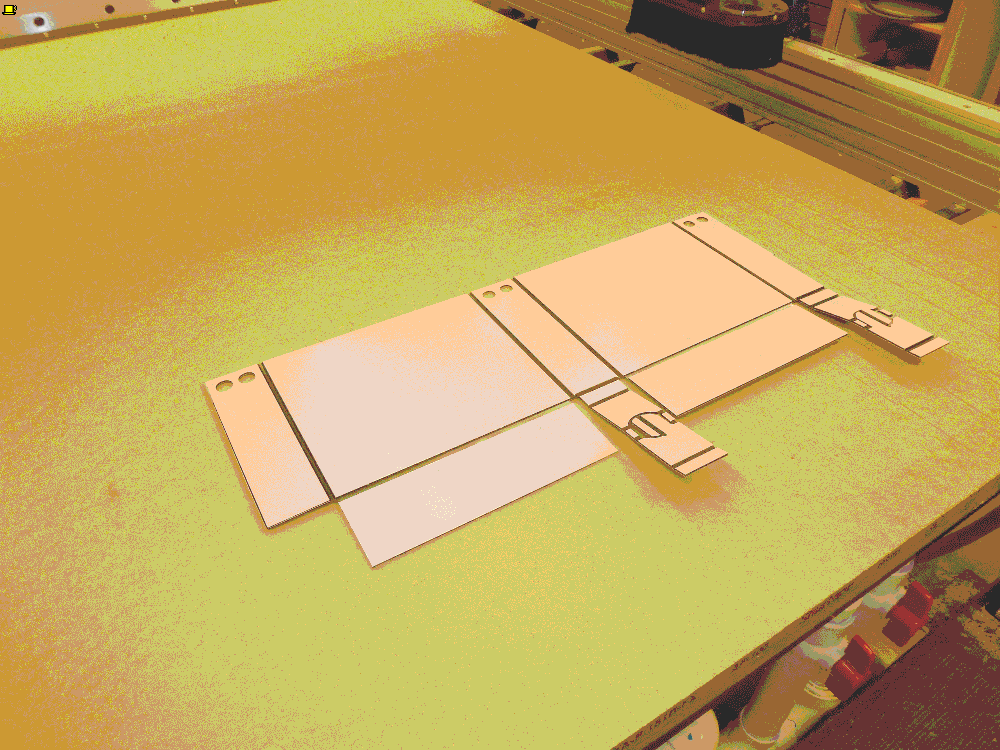We decided to use a material called "Dibond" - a sheet of polyethylene sandwiched between 2 sheets of 0.012" powder-coated aluminum. It is lighter and more rigid than acrylic sheet, and comparable in cost. The most intriguing aspect of this material is how it can be easily bent by V grooving along the desired brake line. The sheets cut easily with an 1/ 8" up-cut bit at 18K RPM. The finished unit is held together with a few strips of 3M VHB tape.

We also used ivory colored acrylic sheet to great effect in this exhibit. This case furniture was created using a simple egg-crate design, which is reminiscent of the region's columnar architecture. When the exhibit is over, these disassemble to store flat.
In the case of this urn for storing cremains, we used a solvent based cement to joint the panels. During the assebly process we placed 200 lbs. of lead bricks on the platform. I am sure it would have taken more.





















